Whether you’re visiting Barcelona, Málaga, Palma de Mallorca, or cities in northern Iberia, like La Coruña, these Spain travel tips will help you make the most of your trip.
Spain is a country with a wide range of landscapes, from mountains and rugged coastlines to sandy Mediterranean beaches, along with a variety of regional cultures, including Andalusian, Catalan, Galician, Basque, and more.
Learning a few basic tips for traveling to Spain will help you embrace the country’s laid-back lifestyle. Enjoy siestas, indulge in tapas, savor the local wines, and understand something of the culture that has shaped this wonderfully diverse country.
Choosing the “Right” Season

Sagrada Familia, Barcelona
An important aspect of choosing the right time of year to travel to Spain depends on where you’d like to go.
For example, the Canary Islands, in the Atlantic off the west coast of Africa, are much warmer in the autumn and winter compared to places like Vigo or La Coruña in the north. Málaga, on the Costa del Sol, is another almost year-round part of Spain.
The “right” season also depends on your list of things to do in Spain, and whether or not they are weather-dependent. With cities, museums, beaches, and mountains on offer, you’ll have plenty to choose from.
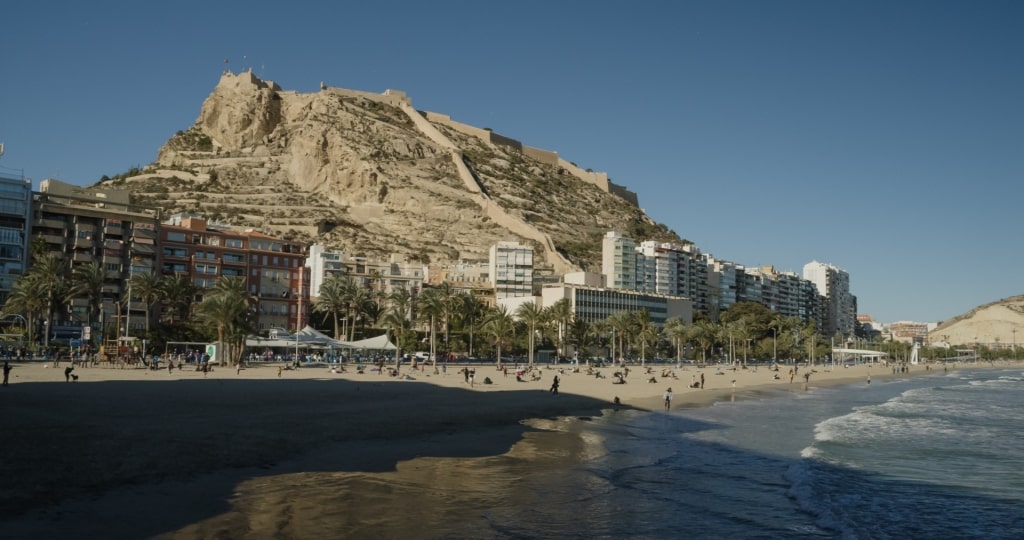
Beach in Alicante
The peak tourist season in Spain is during the summer, especially from June to August when Europeans head for the beaches. Summer attracts big crowds thanks to the warmer weather, long daylight hours, and variety of regional festivals and events.
If you enjoy a bustling atmosphere, summer is the best time to visit Spain. If, on the other hand, you’d prefer to avoid the crowds, autumn, or even winter, might suit you better.
Be Aware of Regional Weather Differences
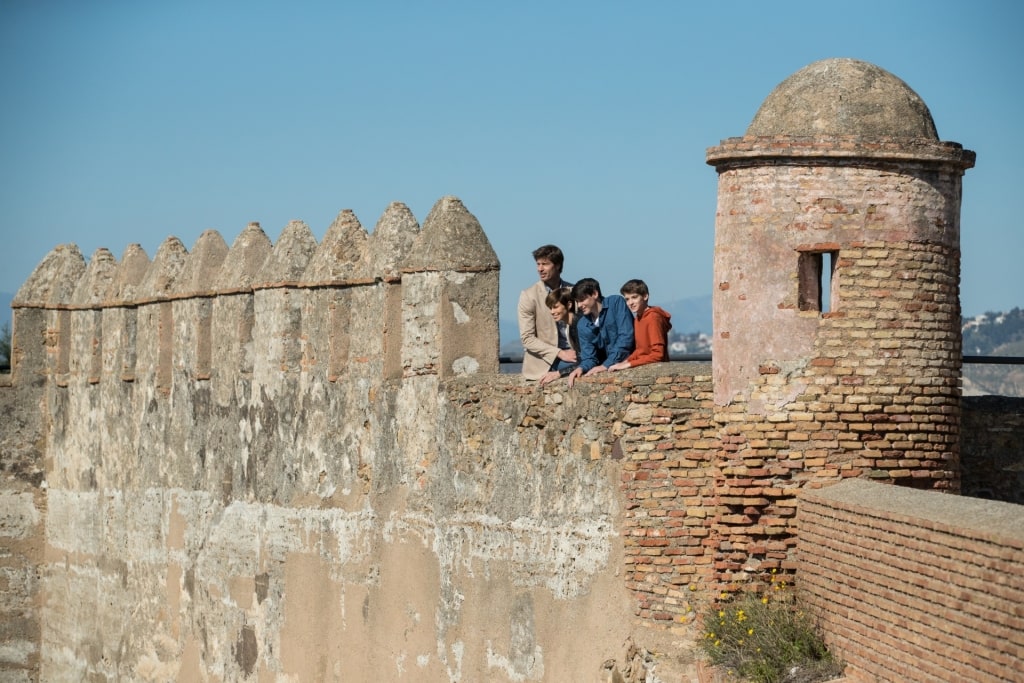
Malaga
Regional weather and temperature differences, along with rainfall averages, will also likely factor into your plans when visiting Spain.
In the north, as a general rule, the optimal time to visit is late spring and early fall. The weather is mild, and you can avoid the peak summer crowds. July and August are usually the hottest months in the north. Also keep in mind that the greener northern regions, in cities like Vigo and La Coruña, can experience rain throughout the year.
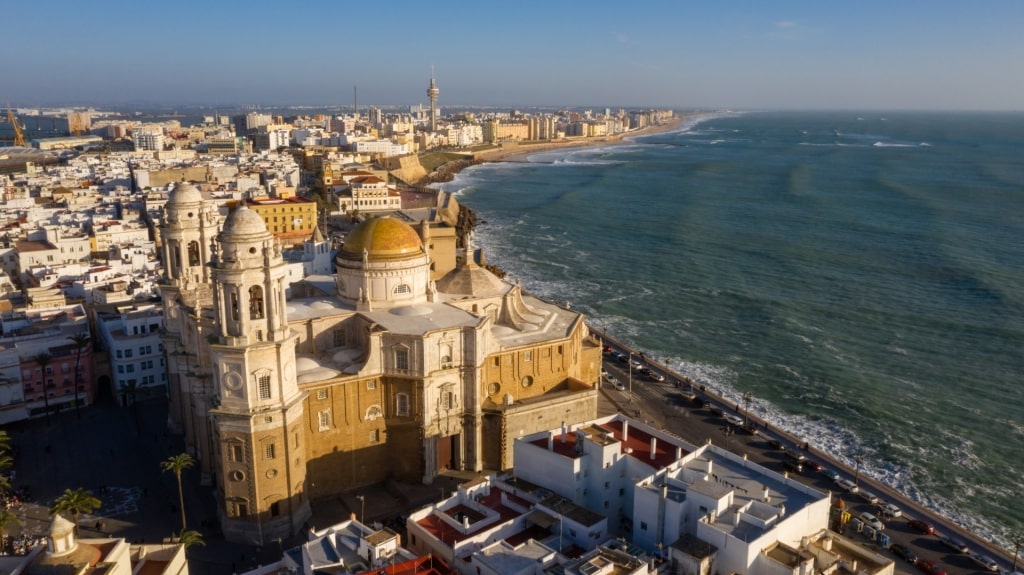
Cadiz
In Southern Spain, in places like Andalusia and even the Balearic Islands, the best time to visit is typically during the spring and autumn. Both of these seasons offer pleasant temperatures without the intense summer heat.
If you love the sunshine, July and August, the hottest months in the south. Rainfall in the south is minimal, and the region is generally fairly dry. However, it does rain occasionally during the winter.
The Canary Islands enjoy a mild climate throughout the year, making them a much sought-after destination. Spring and fall are particularly pleasant. August is usually the warmest month in the Canaries.
Pack for Different Locations & Events

Malaga
Dressing the part is important in Spain, as some religious and cultural sites (and some of those fancy restaurants you’d like to try out) may have specific dress codes.
You’ll need to cover your shoulders in Spanish churches, and ideally, not turn up in shorts. The Spanish tend to be stylish dressers, so pack some casual chic evening wear if you want to dine in upscale restaurants.
You’ll also need beachwear, walking shoes, and if you intend to play golf on the Costa del Sol, suitable golf gear, as all the courses have a dress code.
In the north, the climate is cooler and rain is possible, so pack a waterproof if you’re visiting Galicia and the Basque Country in the shoulder seasons, which are during spring and fall in Spain.
Read: What to Wear in Spain for Every Occasion
Sun-Smart Essentials: Pack a Hat, Sunscreen, & Water Bottle

Barcelona
Packing a hat, sunscreen, and a water bottle is crucial when visiting Spain, especially during the warmer months.
Spain, overall, is a sunny nation. The south is especially known for high temperatures and strong sunlight. A hat provides shade for your face, neck, and head while also protecting you from the intense heat.

Malaga
Since Iberia experiences a warmer Mediterranean climate, sunscreen with an SPF of at least 15 or higher will help safeguard your skin from harmful UV rays, reducing the risk of sunburn or skin damage.
Staying hydrated is also crucial in warmer regions, including Spain. A good tip for traveling to Spain is to always carry a reusable water bottle, as it will allow you to have water readily available throughout the day, which will help prevent heat-related issues.
Unlike Mexico, the tap water in Spain is safe to drink, which makes bottle refills fairly easy while you’re out exploring.
Read: Best Places for Solo Travel in Europe
Learn a Few Basic Spanish Phrases
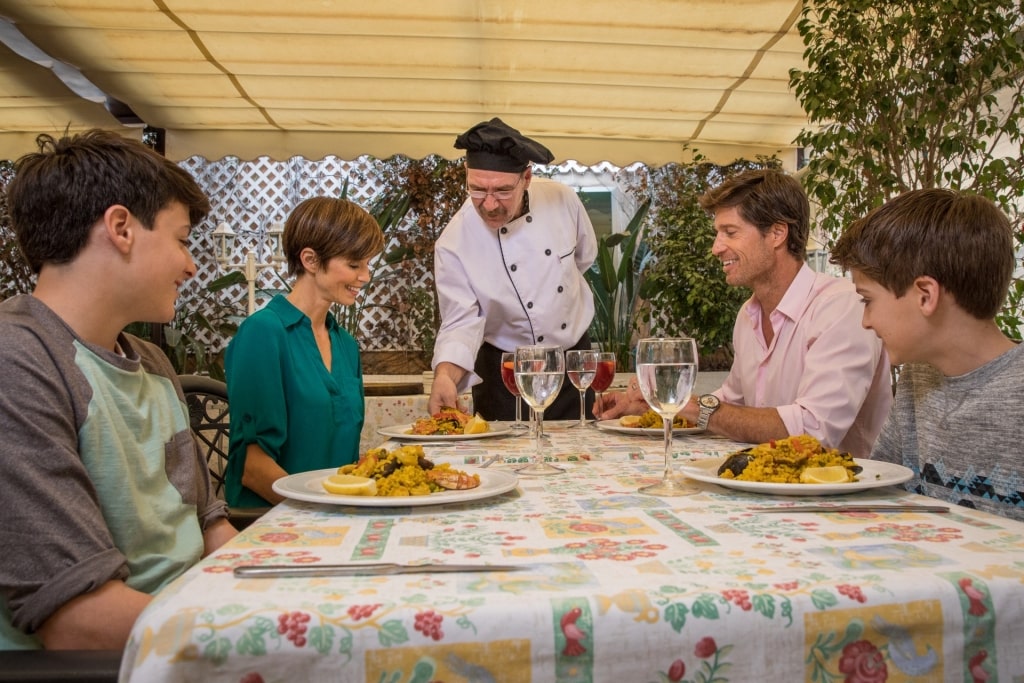
Cartagena
In the service sector, English is widely spoken, like in other European countries. However, venturing off the common path in Spain may require learning a few Spanish words since English isn’t as prevalent compared to nearby Portugal and other EU nations.
Knowing some basic Spanish can also help endear you with locals. Here are a few essential words and phrases to kickstart your learning process:
“Hola,” meaning “hello,” is probably already familiar to you, while “por favor” translates to “please,” and “gracias” to “thank you.” “Sí” and “no” signify “yes” and “no” (similar to English), respectively.
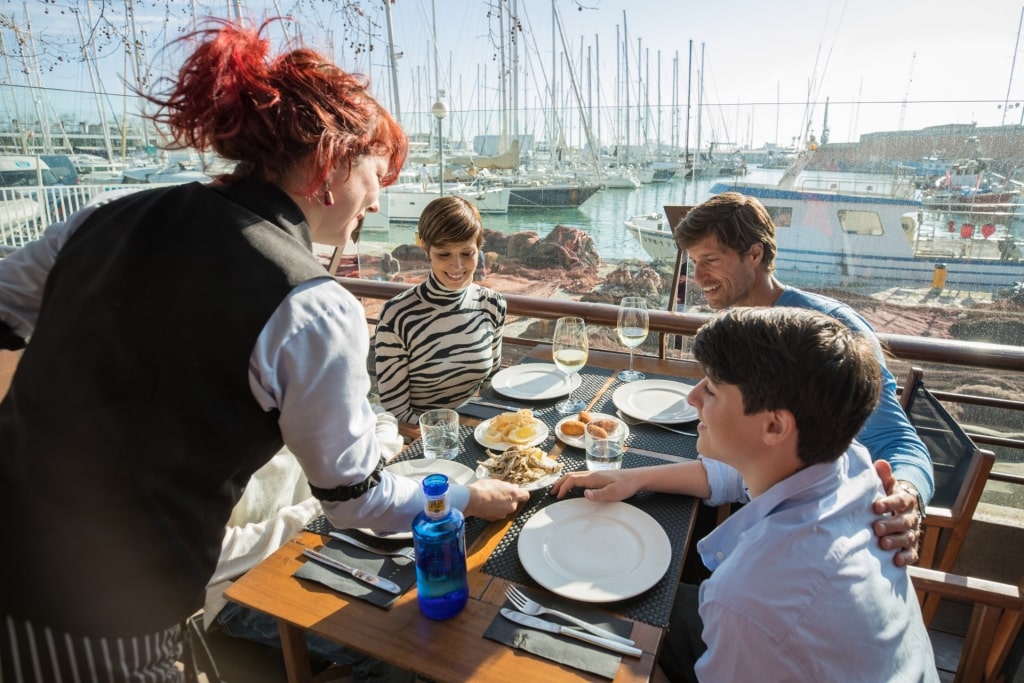
Palma de Mallorca
“¿Cuánto cuesta?” serves as a helpful phrase to ask about prices. “No entiendo” conveys “I don’t understand,” while “puede ayudarme?” is how you can request someone’s help. To figure out if someone speaks English, you can ask “¿hablas inglés?”
“¿Dónde está el baño?” or “Where is the bathroom?” is a crucial phrase to learn. “Perdón” is an excellent way to say “excuse me” if you accidentally bump into someone. Last, but not least, “adios” means “goodbye.”
If you’re traveling in Spain, you will notice dual-language signage as more and more regions embrace their native tongue. In Barcelona, it’s Catalan, and in Mallorca, Mallorquí.
In Galicia, locals speak Galician, and Basque in the Basque country. Castilian Spanish will, however, be understood everywhere.
Siestas & Mealtimes
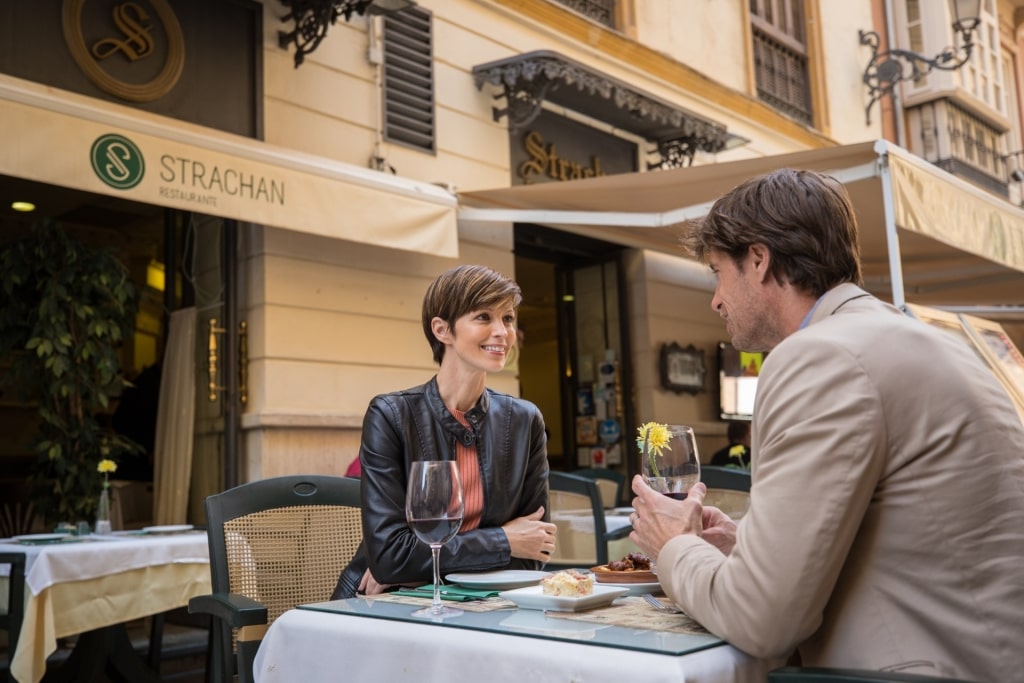
Malaga
In Spain, the daily schedule can differ from what you might be accustomed to back home. One of the most important Spain travel tips is to be mindful of local customs, like dining late, so you can blend in with the crowd.
The siesta is a short nap or rest taken after lunch (particularly in warmer regions), where shops close from around 2:00pm to 5:00pm so people can escape the heat.
These days, due to modern work schedules, this Spanish tradition has diminished, although, depending on location, you may still notice shops closing their doors in the afternoon.
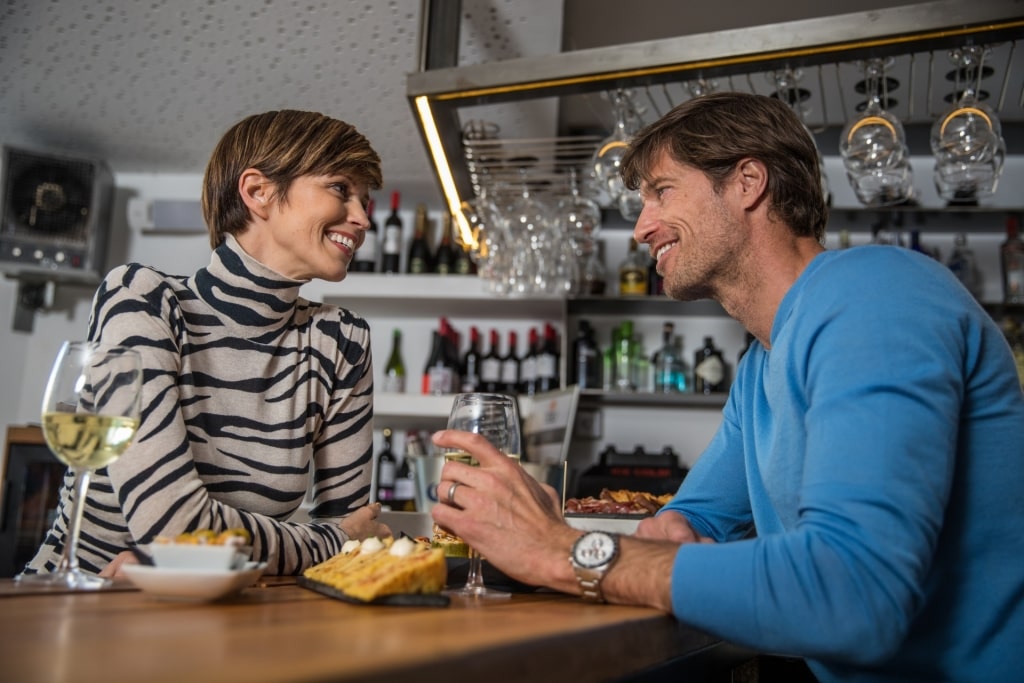
Palma de Mallorca
Lunch is the biggest meal of the day and is typically eaten between 1:30pm and 3:30pm. It’s a larger, more leisurely meal than dinner and often consists of multiple courses, sometimes with wine. Afterward, it might be time for a siesta to rest your overstuffed belly!
“La cena,” or dinner, tends to be lighter than lunch and is eaten fairly late in the evening. Spaniards typically sit down for dinner between 8:00 pm and 10:00 pm—although in some regions, it can be even later, especially during the summer when restaurants are open later.
You may see locals heading out for a stroll in the early evening and stopping to share some tapas with friends.
Get to Know Regional Cuisines
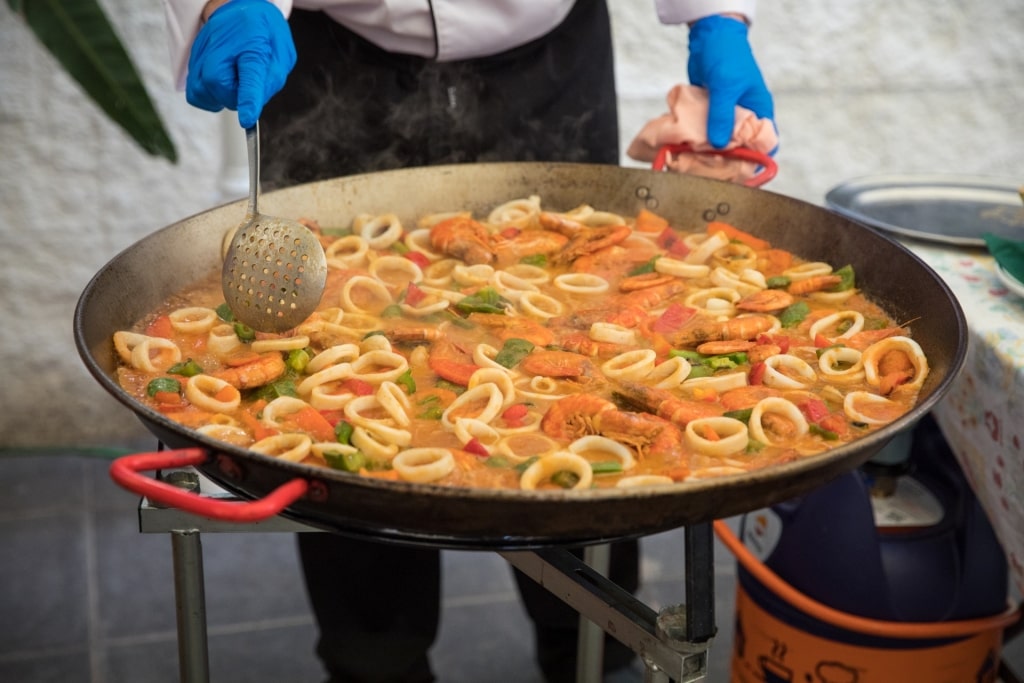
Paella
Each region in Spain has its unique cuisine, influenced by climate and culture. Here are a few regional examples to give you some idea of the local culinary flavors available in Spain.
In Barcelona, in Catalonia, you can enjoy paella, a rice dish often featuring seafood and other types of meat (such as rabbit); escudella i carn d’olla, a hearty meat and vegetable stew; and fideuà (from Valencia), a seafood noodle-based dish that resembles paella. Catalonia is also famed for its crema Catalana, a creamy dessert similar to crème brûlée.
Paella is a ubiquitous Spanish dish that varies in ingredients and cooking techniques across regions, offering diverse gastronomic experiences throughout Spain. But it originated in Valencia, which is where you’ll still find the best paella restaurants.
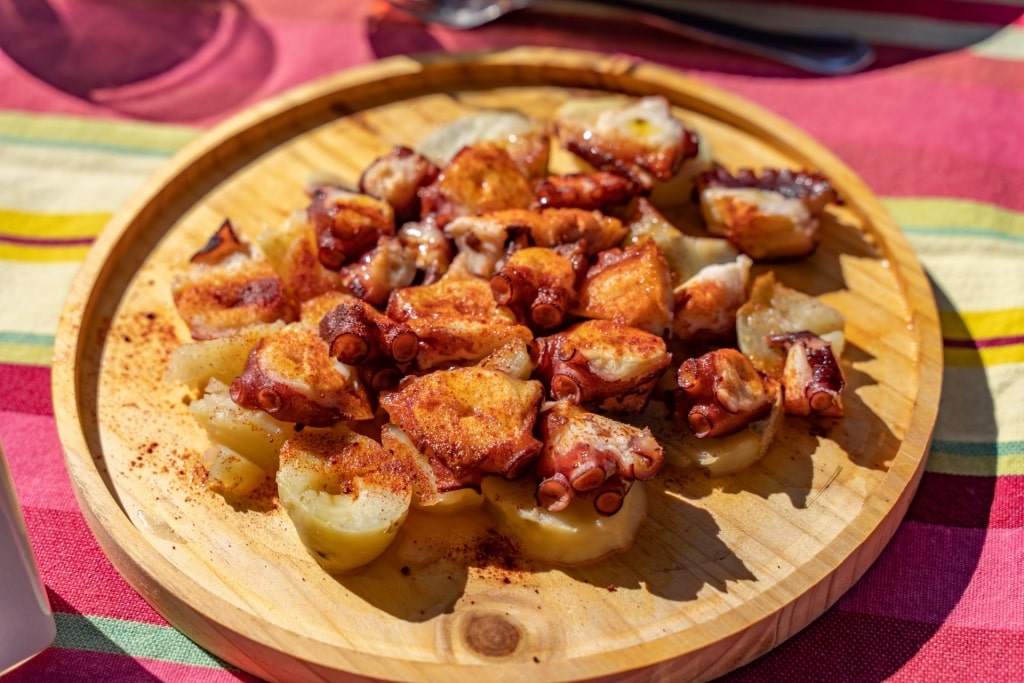
Pulpo a la gallega
In the Spanish beach town of La Coruña, in Galicia, meals are heavily influenced by seafood. Pulpo a la gallega, or Galician-style octopus, is a big favorite among seafood lovers. Other specialties include empanada gallega, a savory pie filled with various ingredients, and caldo Gallego, a hearty soup with greens, potatoes, and pork.

Pescaíto frito
Málaga’s Andalusian cuisine features a blend of Mediterranean and Moorish influences. Dishes here include pescaíto frito, made with a variety of fried fish; gazpacho, a delicious cold tomato-based soup; and sardinas al espeto, which are skewered grilled sardines. You’ll see these for sale on the beach. For desserts, look out for the almond cake tarta malagueña.
Palma de Mallorca and the Balearic Islands are amazing spots for fresh seafood. You can dig into caldereta de langosta, a lobster stew; the smoky and spicy sobrassada cured sausage; and for dessert or a snack, try the spiral-shaped ensaimada pastry. Arròs brut, or “dirty rice,” is a flavorful rice stew you ought to sample as well.
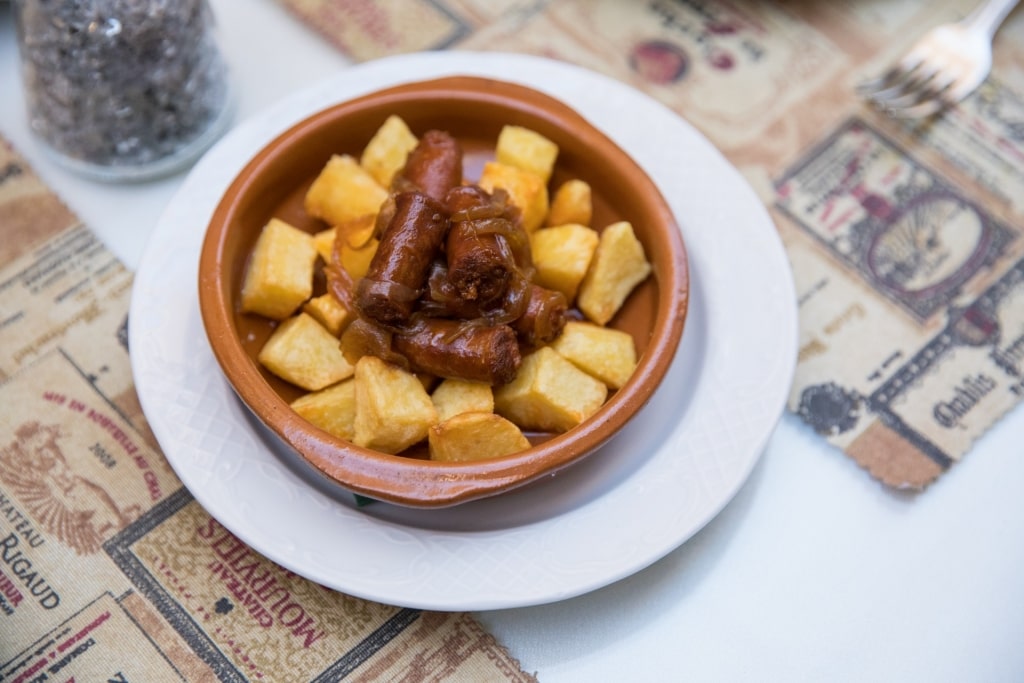
Tapas
Andalusian cuisine, especially in Seville, is big on tapas culture. Everyone loves bite-sized tapas. Other popular dishes include salmorejo, a thicker version of gazpacho; espinacas con garbanzos (spinach with chickpeas); and the ubiquitous croquetas. “Sevillanos” and foreigners also delight in eating the tortilla española potato omelet.
Learn to Love Olive Oil…With Everything
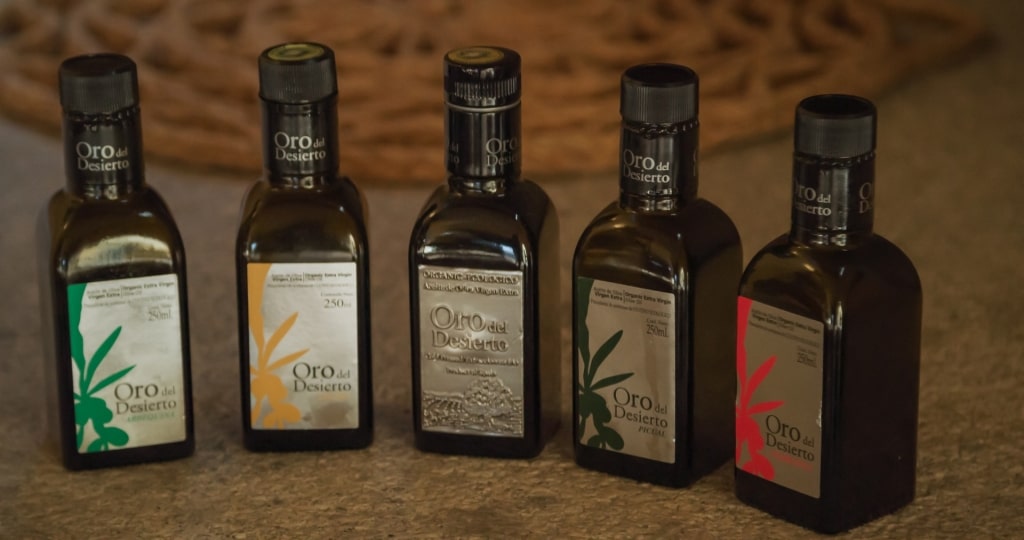
Olive oil
Olive oil holds a prominent position in Spanish culture. Its omnipresence in Spanish gastronomy is hard to miss, with olive oil consistently drizzled over freshly baked bread, used in salad dressings, and various cooking methods.
Spanish cuisine’s deep-rooted relationship with olive oil stems from the country’s favorable climate for olive cultivation, which in turn means an abundance of olive trees.
Olive oil’s versatility and health benefits (it contains monounsaturated fats and antioxidants) have also helped make this oil a deeply ingrained staple in Spanish cooking.

Tortilla Española
The tortilla Española (Spanish omelet), made with eggs, potatoes, and onions, is fried in olive oil, while the Catalan pan con tomate, which consists of toasted bread rubbed with garlic and ripe tomatoes, also comes with generous amounts of olive oil (along with sprinkled salt) poured on top of the bread.
Acquaint Yourself With Spain’s Alcoholic Beverages
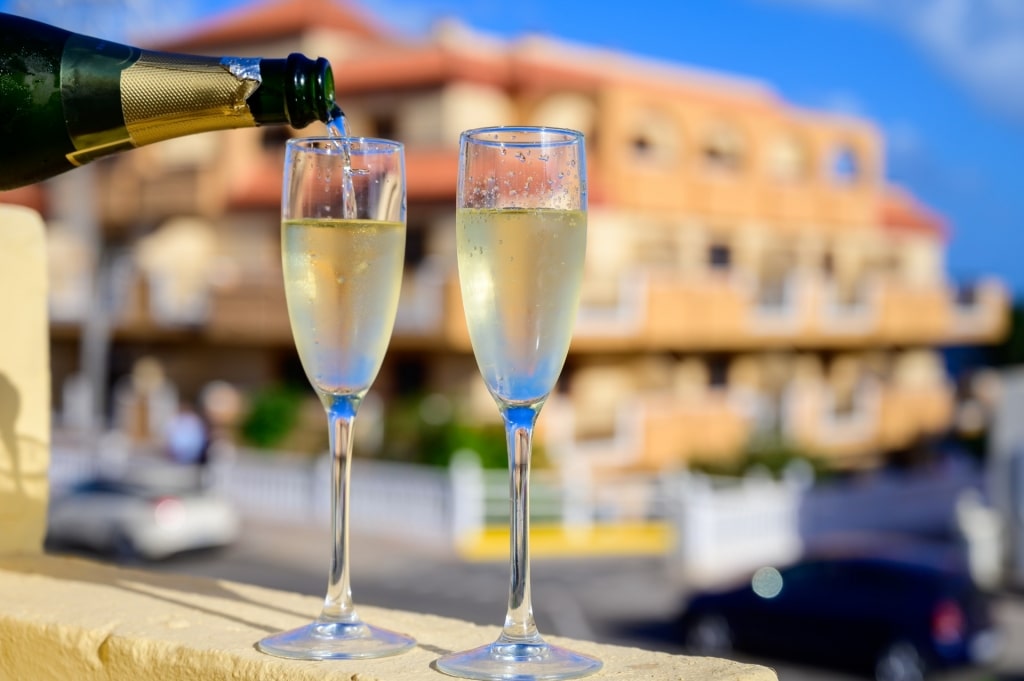
Cava
Any list of Spain travel tips would be incomplete without exploring the country’s diverse regions as defined by alcoholic beverages.
In Catalonia, try cava if you can, which is a sparkling wine akin to Champagne, crafted using the traditional méthode champenoise process. Cava employs Macabeo, Parellada, and Xarel·lo grapes.
Rioja wine (La Rioja), typically from Tempranillo grapes, is a delicious wine aged in oak barrels, and boasts a winemaking tradition dating back millennia.

Sherry
Sherry (Xérès) from Jerez de la Frontera, in Andalusia, is a lovely fortified wine ranging from dry to sweet and makes for a delightful aperitif before lunch or dinner, or after, as a digestif.
Traditional apple cider, or “sidra” is prevalent in northern regions like Asturias and the Basque Country, and features a unique pouring style (the bottle is held high above the glass) known as “escanciar,” which enhances the cider’s flavors.
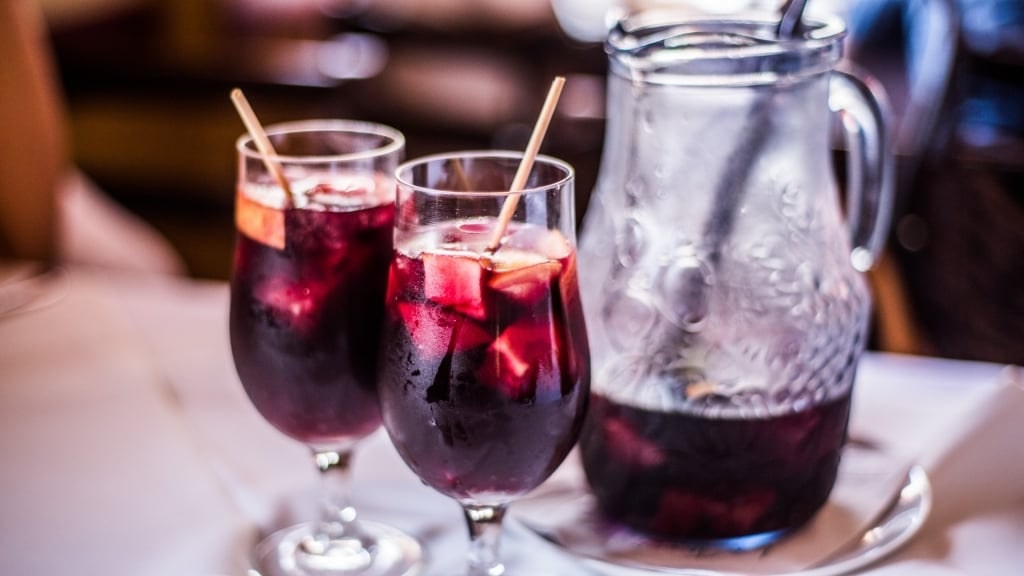
Sangria
You’ve likely heard of sangria; this sweet wine-based drink, mixed with fruits and often fortified with brandy, can be found throughout Spain and is great fun to share with friends or family.
In the realm of spirits and beers, you can partake of Galicia’s pomace orujo brandy, distilled from leftover winemaking grapes. Some of the most prominent Spanish beer brands include Estrella Galicia, San Miguel, and Mahou (now owned by San Miguel).
Schedule Travel Around Popular Festivals and Events
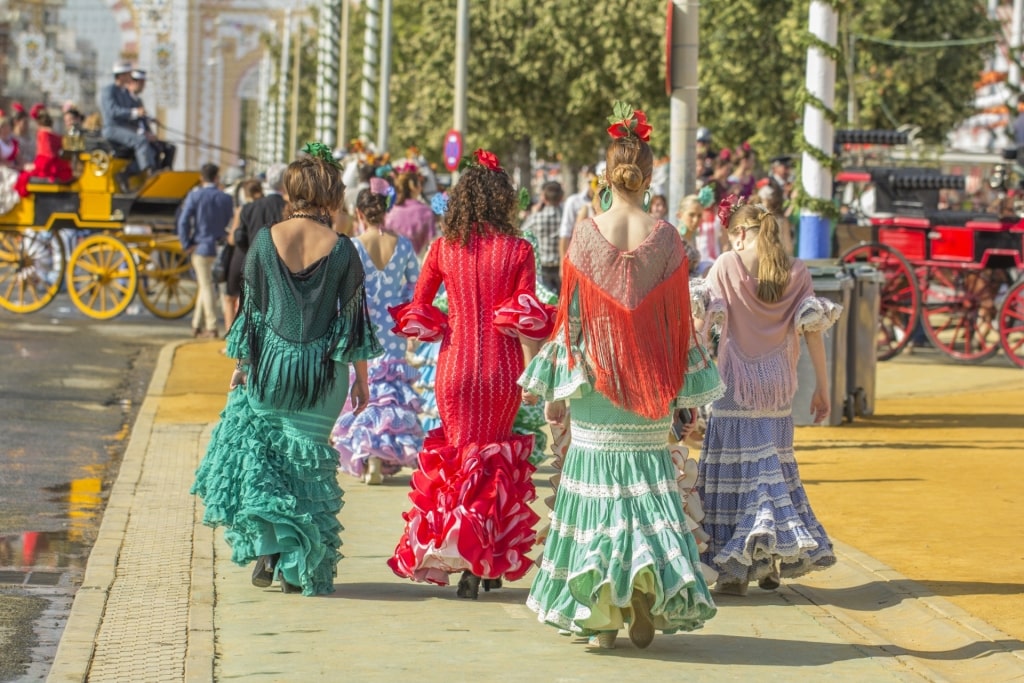
Feria de Abril in Seville
A brief overview of some of the main festivals in popular Spanish cities can help you plan your travel schedule in case you’d like to partake in the revelries—or else avoid the festival crowds.

Hogueras de San Juan, Alicante
In Alicante, along the Costa Blanca, you have the week-long Hogueras de San Juan, celebrated in late June with bonfires, fireworks, parades, street parties, and the burning of some beautiful papier-mâché sculptures.
While you’re in Barcelona, you can enjoy the Primavera Sound music festival in late spring, featuring global artists and tons of music genres. Barcelona’s Sónar Festival, in June, is another cool multimedia arts and electronic music gathering in Catalonia.
Cartagena, home to an ancient Roman theater, puts on a Roman-themed festival in late September, featuring reenactments of the Roman and Carthaginian rivalries of old.

Festas de María Pita, La Coruña
Up north, in La Coruña, you can attend Festas de María Pita in August, dedicated to the city’s local heroine (she fought the English), with fireworks, street performances, food stalls, and a variety of other cultural events.
Seville hosts Feria de Abril (in April), known for its flamenco music and flamboyant parades, while Vigo is home to O Marisquiño, in August, which celebrates urban street culture, including skateboarding and graffiti art.
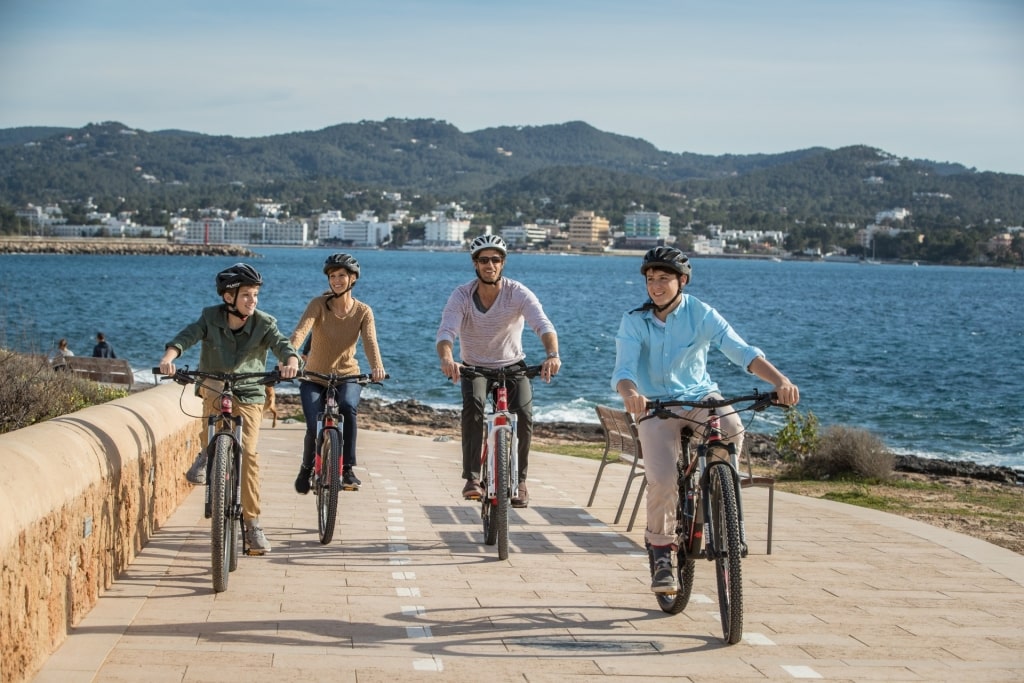
Ibiza
Browse our cruises to Spain for a fantastic way to explore this nation’s diversity of cultures and landscapes. Knowing some Spanish travel tips beforehand will help make your dream vacation even better.


